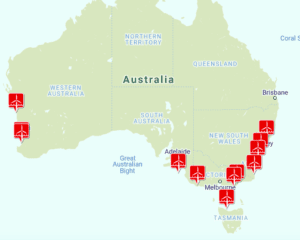Australians are possibly getting used to the idea that they may lose the cricket to the Poms this northern summer, and possibly the rugby tests against the British Lions too. But who would have expected that the UK would beat Australia in solar energy as well. Didn’t we invent the bloody technology? Haven’t we got a lot more sun?
A new report from NPD SolarBuzz delivers the grim news. Not only did the UK reach the 2.5GW mark in April, probably a month or two before Australia, they are accelerating their deployment. In the last quarter, around 400MW was installed (twice the rate of Australia), and the country seems to be heading towards 20GW of solar PV by 2020 – when, at current rates, it could have twice the amount as sunny Australia. Most embarrassing of all – the UK has several dozen solar projects of 5MW or above – another six were announced just this week. Australia just has one.
This first graph shows the rate of solar PV installation in the UK – almost all of it has come in the last 30-months – an even more dramatic uptake than in Australia.
And as the next graph from NPD SolarBuzz shows, it is not just in the “sunny” south that solar PV is being installed. It is happening through the Midlands and in the north.
Why is this so? NPD Solarbuzz has a full analysis that can be found here.
But the principal points are these:
- The UK has deployed a combination of feed in tariffs and renewable energy certificates, which with the fall in module and system pricing has enabled the solar PV industry to flourish.
- Solar was once dismissed by most politicians as too costly compared to wind, wave and tidal, but is now the subject of an “unofficial binding” taret of 20 GW by 2020. That will require 2.5GW a year to meet that target.
- Solar is gaining popularity not just because of its costs, but also because of the public objections to wind deployment and political sensitivity to signing off on new nuclear plants, the risks from unproven shale gas and tidal approaches, and rising electricity bills at the consumer level that are causing mistrust in energy providers and policy-makers alike.
- Contrary to some popular opinion within the UK, solar adoption across the various regions in the UK is not dictated by solar insolation rates between the north and the south. The bigger factors are the enthusiasm of regional and local councils to solar PV farms, land availability (greenfield or brownfield), local grid infrastructure, the locations of commercial rooftops owned by national brands such as Sainsburys and Morrisons, and the sites chosen for new residential builds with integrated PV.











